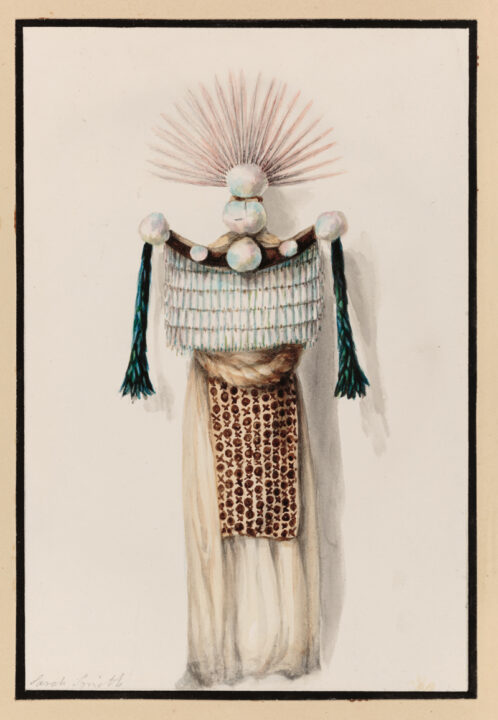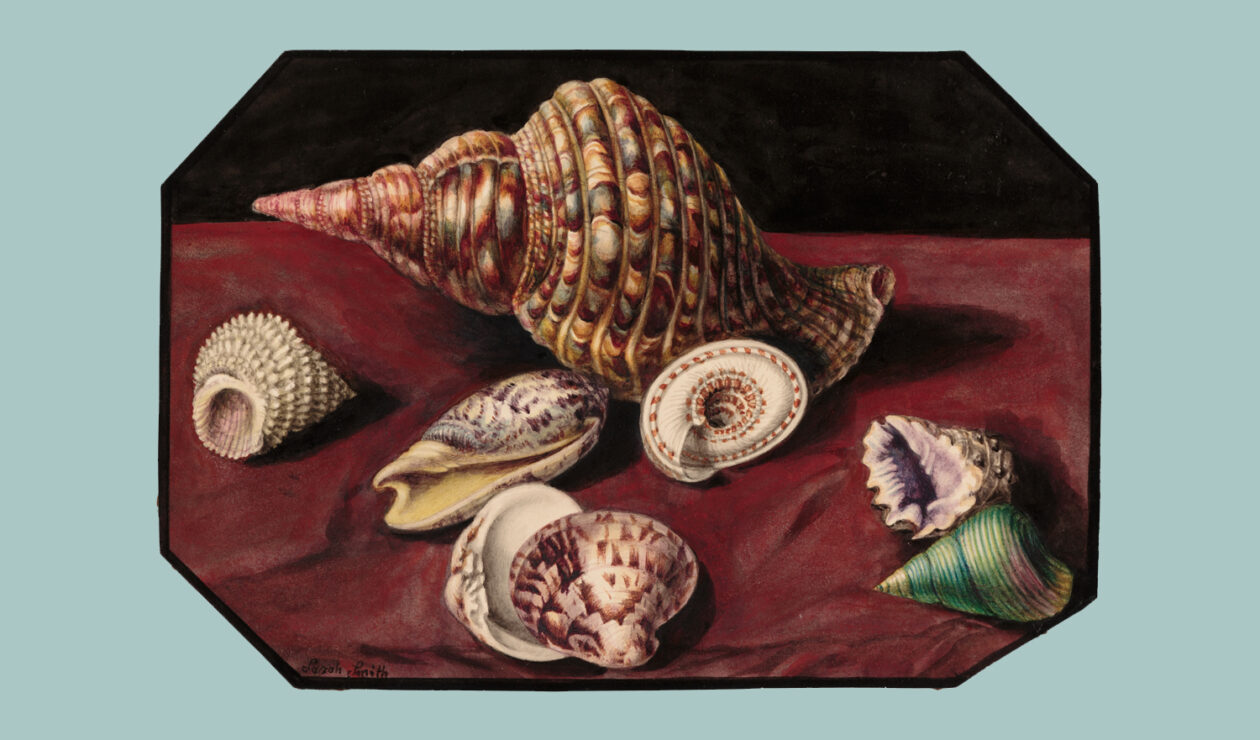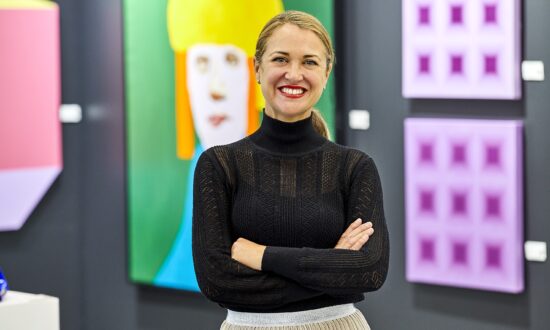Biographical details for the 18th-century watercolourist Sarah Stone are limited. Although her younger sister was born in London, there is no record of the artist’s date or place of birth. Most reports about Stone refer to an article published in The Universal Review decades after her death, in 1890. In it, she was referred to as the “celebrated Miss Stone”, who “made a large number of watercolour paintings of some of the curious birds in Sir Ashton Lever’s Museum”.
The article continues to describe Stone’s technical skill, noting that her father was a fan painter, a practice that requires delicate and accurate brushwork. In the same passage, details of the family’s painting practice are revealed: “The Stones, unable to get proper colours wherewith to paint, fabricated them out of brickdust, and the juice of the leaves and petals of flowers.”
Receiving her first commissions as a teenager, Stone became one of the most prominent watercolourists of natural history specimens in Britian.

Sarah Stone, Album of forty watercolours, 1790-1820, London; NF Rochlin Bequest Fund 2020, Art Gallery of SA.
As the 1890 article suggests, she was best known for her employment at the Holophusicon, also known as the Leverian Museum, where she documented the contents of Sir Ashton’s natural history and ethnography collection. At that time, the museum housed the most extensive natural history collection in Britain, with more than 25,000 items, among them examples from the Pacific and Australia collected by James Cook. From around 1777 to 1785, Stone produced more than a thousand watercolours, and eventually several rooms of the museum were devoted to the display of her work.
Today, around 900 watercolours by Stone survive. Many of them have been bound into albums, six of which are in various collections: at the Natural History Museum of London, the Bishop Museum in Honolulu, the Australian Museum in Sydney, and the State Library of New South Wales.
The Art Gallery of South Australia has recently acquired a newly discovered album of 40 watercolours. Dated from 1790 to 1820, it is the only known collection confidently attributed to the artist’s late period, after her 1789 marriage to the naval officer John Langland Smith. With its varied content, the album offers a window into Stone’s professional work, as well as her private interests later in her life.
Several watercolours in this album have a Leverian connection. These include an otherwise-unrecorded representation of an 18th-century Tahitian chief mourner’s costume (known as heva tūpāpā’u), which is possibly a depiction of the now-lost heva tūpāpā’u collected by Cook during his second voyage and originally recorded in the Holophusicon collection.[1] With expert draughtsmanship, the artist captures the costume’s iridescent mother-of-pearl ornamentation and textured tapa cloth.
The album also contains six views of parrots and a detailed depiction of shells, which is dominated by a large Atlantic triton’s trumpet (Charonia variegata). Set against a dark burgundy background, the central shell’s unique variegated pattern is recorded in browns, blues and pinks. A similar arrangement of shells by Stone (1781) is in the collection of the National Gallery of Australia and includes the specimen of the Tasmanian scallop (Pecten fumatus) acquired during Cook’s first voyage to Australia in 1770.

Installation view: Sarah Stone’s Album of forty watercolours in the Elder Wing at the Art Gallery of SA. Photo: Saul Steed / supplied
Stone’s album can currently be viewed in the Elder Wing of Australian Art in a display that critically reflects on this colonial history of collecting. Her paintings can be seen alongside the sculpture Occupied Territory (1995), by contemporary artist Fiona Hall, which references Cook and refutes the claim of terra nullius. Hall’s work often highlights the absurdity of colonial practices, such as those of Lever, which aimed to collect, contain, and conquer nature.
In addition to Stone’s natural history subjects, the album includes a series of rare personal works.
Bound in leather with an embossed binding manufactured by Remnant & Edwards in the late 1820s, the album was most likely assembled around the time that Stone’s husband was afflicted by chronic illness. It appears to be a treasured family heirloom, an impression further conveyed by the ornately gilt-printed title page with the hand-painted monogram “JLS & SS”, referring to the artist and her husband. On the pages that follow, natural history studies can be viewed alongside portraits of beloved family pets and landscapes populated by holidaymakers.

Sarah Stone, Album of forty watercolours, 1790-1820, London; NF Rochlin Bequest Fund 2020, Art Gallery of SA.
The collection also features a pair of religious icons and several portraits of women, including a nude in a Garden of Eden scene. These personal elements, in addition to the work’s provenance, indicate it was assembled by the artist to reflect her multifaceted life and work. It is tempting to also propose that the album may have been a gift to the couple’s only son, Henry.
This newly discovered album significantly expands our understanding of Stone’s art and life. It offers a rare glimpse into her private realm and suggests that the artist’s professional and personal interests extended beyond museum cabinets and walls.
Elle Freak is associate curator of Australian Paintings and Sculpture at the Art Gallery of South Australia. This article is part of InReview’s Off the Wall series, in which AGSA curators offer an insight into specific works or displays at the gallery.
————–
[1] Adrienne Kaeppler, Artificial curiosities, Bishop Museum Press, Honolulu, c.1978, p.125. For further information, see Christine E. Jackson, Sarah Stone: natural curiosities from the New Worlds, Merrell Holbertson, London; Natural History Museum, London, 1998; Adrienne Kaeppler, Holophusicon: The Leverian Museum, Museum für Völkerkunde, Germany, 2011.
Support local arts journalism
Your support will help us continue the important work of InReview in publishing free professional journalism that celebrates, interrogates and amplifies arts and culture in South Australia.
Donate Here




